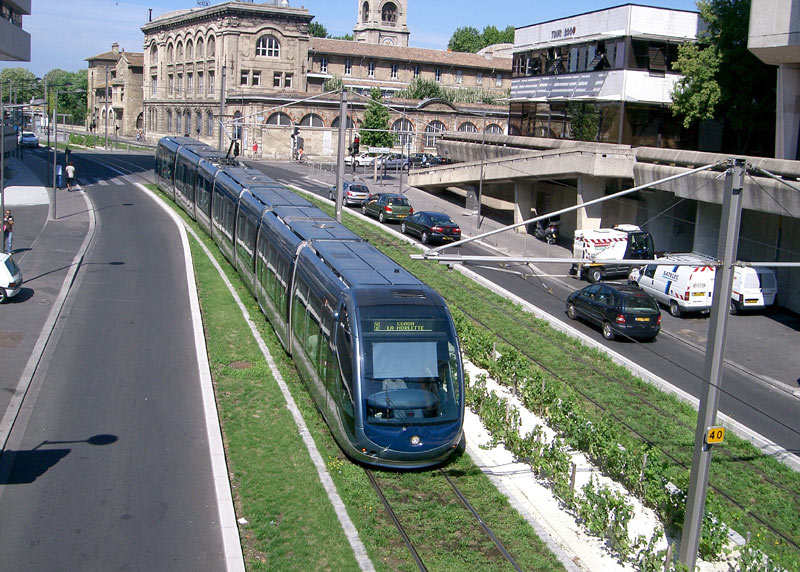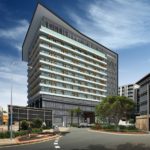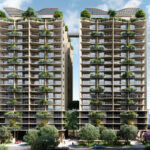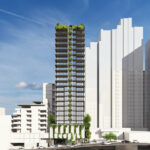The year is 2011. Brisbane is now a city of 2 million people and a region of 3 million. Fuel prices are reaching $1.50 a litre, oil is now harder to extract from the ground and no new oil reserves are being found. Recent infrastructure developments which have been completed or are under construction include, Clem 7, Gateway Duplication, Go Between Bridge, Green Bridge, Eastern Busway, Airport Link & Northern Busway, Legacy Way.
Brisbane is now one of few ‘world cities’ still constructing mammoth highway projects. Investments in transport across the globe are shifting to sustainable mass transit. However Brisbane continues to build billion dollar road projects, completely ignoring peak oil projections and global trends which are seeing demand for alternative transport options in Light Rail Transit (LRT), Heavy Rail and Metro Underground Rail.
In the 1960’s a transport plan commissioned by a US company called ‘Wilbur Smith’ released the Wilber Smith Plan – which encouraged the construction of freeways and sprawling estates. The central freeway system was one policy example of this plan.
Though the Wilbur Smith plan is now widely condemned by town planners everywhere for creating a singular mode of transport – that being the car, as well as encouraging urban sprawl, amazingly, this plan is still active – but under the new name of ‘TransApex‘, a plan resurrected by former Lord Mayor Campbell Newman. Over $10 billion dollars spent soly on freeway and road construction consisting of:
- Clem7 (final cost $3.2 billion)
- AirportLink (estimated completion cost $4.8 billion)
- Go Between Bridge (final cost $338 million)
- Legacy Way (estimated completion cost $1.8 billion)
- Proposed: East-West Link (estimated between $3-5 billion)
The sad reality is that politicians are failing to understand and respond to the growing need for better mass transit, and in particular rail infrastructure – which has remained untouched for decades in Brisbane. Cities across the world are moving to establish Light & Heavy Rail and Metro transport infrastructure – to give their citizens an alternative to driving.
The Brisbane City Council is failing to understand 21st century planning principals. Last week it released a draft long-term infrastructure report which plans to build ‘mammoth’ car parks at the Gabba, Milton and Bowen Hills. The question that needs to be asked is “what will happen when these car parks reach capacity? are we going to build even bigger car parks?” It is simply astonishing that in this day and age, such a policy can even be considered. The basic problem of car dependancy needs to be addressed, instead of bandaid solutions. (See video – built to last for more explanation). However to their credit, other solutions outlined in the report such as 24/7 transport in the CBD and Airport are sound policies.
Even Brisbane’s beach cultured neighbours are establishing light rail plans with a 16 station Light Rail system on the Gold Coast currently under construction as well as a new system planned for the Sunshine Coast (see video). Sydney, Melbourne, Adelaide are now expanding their Light Rail systems while Perth is investigating the potential for a system (video here). All while Brisbane continues to build and rely on two modes of transport, cars and buses. Busways have been very successful for the time being, however they have their limits. As capacity grows, so will problems for the busway network. One example you may notice on your way home is the cultural centre busway station, which is now at capacity. Gridlocked buses lined from Southbank to the CBD daily.
Brisbane needs a multi-modal transport network, and investment in rail needs to start right now. Looking at case studies from around the world is the best method to perfect a new future rail network in Brisbane.
Next time you drive past the construction site of Legacy Way ($2 billion in leveraged funds), just think, that money – funded by the Brisbane City Council through a QIC loan could have bought us a light rail spline all the way out to the Western Suburbs. It could be much longer then the Gold Coast’s planned LRT system which costs a fraction ($1.2 billion) of Legacy Way’s total expenditure, while freeing up space on major arterial roads as people shift transport modes.
The benefits are here to be seen. Permanence, reliability and desirability.
The following video is about the success of Charlotte’s (USA) light rail project, which is definitely worth a look. Cities are introducing a small sales levy to fund these vital transport projects.
(Top image credit to the Brisbane Tramway Musium & Jessie24)
Charlotte Light Rail
This following video is about Tampa Bay, Florida where they faced a proposition last November for a one cent in the dollar sales tax (capped at $50) to fund light rail and complimentary transit improvements. Read more about other case studies around the world here. Brisbane needs a new way of thinking, share this article and spread the word.









Agreed 100%, simple as 1 2 3, basically the council puts one step forward and three steps back, they go ahead and build a great busway system to encourage people off the roads (mass transit) but then build new roads just adding more cars to already congested road network.
I think the bus network its great but it’s also heading to a gridlock of buses and with our congested train and road network during peak time, it’s not a great look on a city that promotes itself as a NEW WORLD CITY.
Obviously the sunshine and gold coast are looking into the future for sustainable mass transit, Brisbane is falling behind.
Just wait another 20 or so years, then the government will look back and see what a mistake their whole road system was…
light rail is the way of the future, and they will only realise this in 20 years time when its too late.
Well researched and presented. Having spent the past two years in Hong Kong where the MTR moves up to 4 million passengers per day and just returned to Australia where cars still grind down the roads burning petrol at A$1.50 per ltr, I am concerned that we as a nation are not prepared for peak oil. Keep up the great work educating the public and governments re more effective alternatives Brisbane Development.com
Brisbane is HOPELESS when it comes to transport planning. They have a few roads into the “new world city” which are choked full of traffic from 6am. It is so archaic and with big buses everywhere that clog the roads even more, it’s a wonder why the city is so backwards. Nothing can happen when the only way to move this city into the future is by CAR. Get with the times Brisbane City Council – your city is outgrowing YOU.
Great article and this issue is something that I really despair about for Brisbane’s future. I love this city but unless we start to see investment in light and heavy rail, rather than stuffing around with buses and road tunnels, this is going to be a very painful city to live and work in as it grows.
Already the busways are congested and becoming a joke at peak hours, and I am bemused as I consider the cost and watch the inefficiency and cumbersome nature of the whole system as it battles to be “mass transit”.
I also lament that all the other major capitals in Australia either have or are at least planning light rail, even the Gold Coast will soon have light rail, leaving Brisbane well behind. The last city to remove it’s trams, but looks like it will be last to put light rail back.
Come on Brisbane, lets see some change and start planning more rail now !
great insight. nice work
If the price of oil becomes out of reach for motorists, the tunnels we are building now can be used for underground rail. We will need these tunnels so we might as well build them now.
Hi, Brisbane Developments i don’t know if it’s in your duty to get a petition out on the light rail in brisbane going. i think the momentum of growing support in the last couple yrs has grown for some sort of light rail system in Brisbane so please hit the streets and get signatures and consider myself to be a volunteer…i guess its a start.
There has been one or two light rail e-petitions submitted to the parliament some time ago. I have been pushing for light rail as much as I can (through this site). Its up to the politicians in the end.
I think this article raises some very important issues given Brisbane’s recent and continued population growth. I also believe that the authorities need to have greater foresight in the construction and implementation of transportation infrastructure for both mass transit and cars.
I might be alone in my belief that the last thing Brisbane really needs is another footbridge, and am I the only one that thinks building a $380 million (Go-Between) toll bridge less than a 100 metres away from a free bridge going to pretty much exactly the same place is just a little absurd. What I also can’t believe is the resistance of authorities to open up the Green Bridge at St. Lucia or at the very least build another bridge in close proximity going to the Dutton Park/West End area in order to ease congestion on Coronation Drive.
I also believe that as Brisbane is becoming a world city it would be incredibly beneficial to have a subway system in a general 10 – 20km radius of the CBD.
It doesn’t seem like rocket science to me, but then again i’m not a town planner. I wouldn’t mind someone explaining to me why these common sense solutions have not/cannot be implemented.
I heard at one stage that the bcc were thinking about putting a subway in which is an excelent idea.
Excellent idea indeed. Although as yet there is no evidence showing the BCC has funds for such a project unfortunately. They’re mainly focussed on getting Legacy Way delivered on time.
Hi there,
Brisbane’s busways work really well. The main issue with Cultural Centre is that it is class B right of way (that is, it shares intersections with car traffic). This means that Cultural Centre is at capacity at 180 buses/hour, or 9000 passengers/direction/hour.
If that were to be upgraded to a class A right of way, you could potentially get 12 000 – 18 000 pphd, a doubling of capacity. This however would require a tunnel under the CBD to do and a number of bus stations which would be a few billion dollars.
In terms of rail investment, Cross River Rail is the first priority as this will allow the rest of the network to be converted over to high frequency operation and act like a metro. Brisbane has 85 train stations within the Brisbane City Council Boundaries, which is more train stations than Toronto!
The South East Busway should not be upgraded to Light Rail, as this would only add a maximum of ~ 5000 pphd. A metro service down the busway would be able to increase that to 30 000 – 40 000 pphd, an effective doubling of capacity.
In terms of what can be done today- more bus lanes are required (coronation drive) and a roll out of further BUZ routes to make a basic frequent network.
I apologise for my blog being on hiatus, it will return mid 2012.
I feel Brisbane is so far behind in what we could be doing to maximise usage and make the impact on the city and streets minimal.
The SE busways work fantastic, it only takes me 15mins to get to work which is amazing – im very lucky my bus route doesnt have to sit in traffic. But the cultural centre station is a big problem – there are so many buses and it gets so conjested, there has to be another solution to clear that area? RE: Trains – the trains are also far too infrequent. go overseas to move cities in north america and europe and their subway or light rail systems see trains coming every couple of minutes (rather than every 15-20mins). I know we have a completely different system but lets get rid of it, upgrade it to something more modern and reliable – a subway or a skytrain, underground/aboveground – something to help move ppl around and get traffic off the streets.
Yes, and its not going to get better in the near future I’m afraid.
Our adversairial political processis bunkum. No one wins…
http://m.brisbanetimes.com.au/queensland/crossriver-rail-wont–happen-newman-20111206-1oh0g.html
The crux of the issue is that Brisbane needs to shift it’s reliance on cars and buses and implement a high frequency, reliable and effective rail system. This is especially true for areas within at least 5km of the CBD. Convert the busways to light rail and convert the stations into hubs. Keep the buses to deliver people to these hubs, instead of having them congest inner-city roads.
Living in the Eastern Suburbs all my life, I’ve seen the transition from an effective system, to one that is fracturing and crumbling under soaring population growth, incompetent planning and poorly implemented infrastructure and ideas.
Sadly, all roads lead to the city. And the shear amount of bottlenecks that exist on Brisbane’s roads is unfathomable. Need I even mention the Stanley St / Riverside Expressway merger? Four lanes of heavy traffic forced to merge into one over a distance of less than 50m.
I recently returned from Sydney and wow what a world class transport system that is. I ran some numbers and their 8 car trains seat 940 people where as our 6 car trains only seat 496. If we widened the central tunnels OR put in a metro system and had main train stations outside of central we could run standard gauge and run sydney trains. These things are truly amazing. The entire system runs like clockwork, in pouring rain in peak hour with flash flooding everywhere (thursday) I caught a bus that was only 2 minutes delayed. It also was not packed. I believe trains are they key, more people on rail = less people on bus and the roads allowing roads to be upgraded where required creating less impact.
Imagine 1000 people every 2minutes moving in and out of the CBD on 5 main lines and another 98 people per bus it would be heaven. Add to that an underground light rail (kelvin grove, paddington, milton, highgate hill, east brisbane, balmoral, newstead, the vally etc) we would be good for another 50 years but only pay 2012 prices on construction costs instead of 2026 costs (easily 3-4x the price of today) Yes it WILL cost billions but its going to cost many more billions if we sit on our hands waiting. Its also not like it wont be paid back. I drive everywhere and I hate it but I hate long train trips sardined in more. I would quite happily pay for a ticket if I could get to work within a reasonable time and not have to walk 5 kilometers each day. More seating density could allow cheaper prices making the service open to even more people. I pay around $80 a week to transport my self and my wife to work from North Brisbane. My current transport trip takes 50minutes + 2k walking time and costs $9.54. It takes me most days 45minutes to drive.
Queensland politicans are short on vision so don’t hold your breath about a decent rail network or tram system any time soon.
Campbell loves his tunnels and Brisbanites love their car.
I am from Brisbane and currently on holiday in Europe. Every city I have been to has made the right decision with their public transport options. Berlin for example has excellent rail infrastructure, trams, underground metro and above ground S trains. Always very quick and efficient.
Why is it we still have to deal with road congestion in Brisbane when we could take some advice from the great cities of the world?
I cannot believe fools like Campbell Newman continue to spend billions of our money on these unused tunnels and bridges. It infuriates me like nothing else.